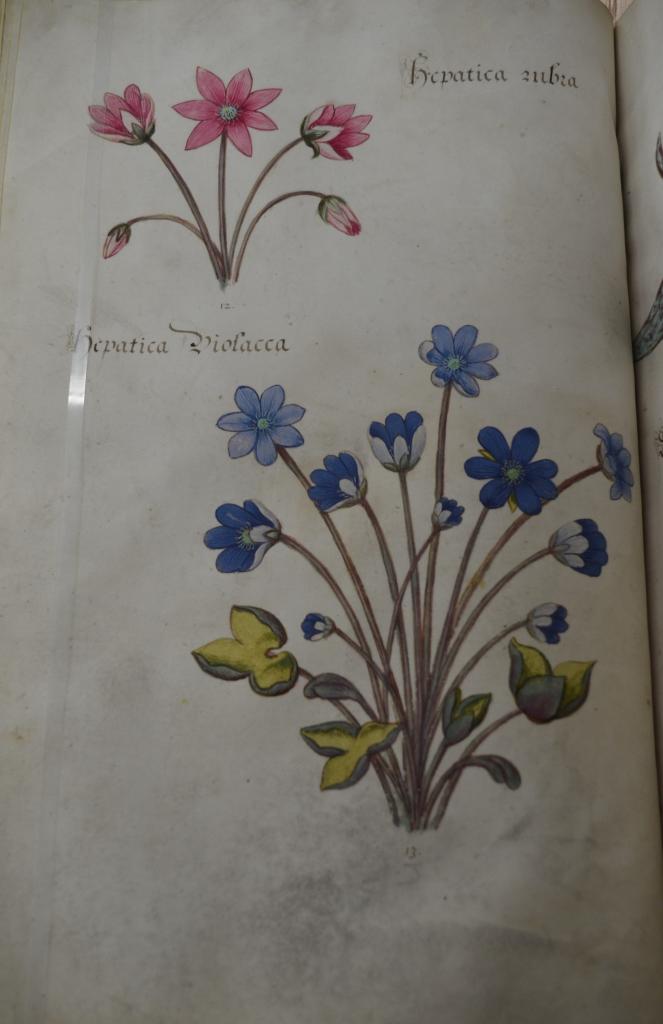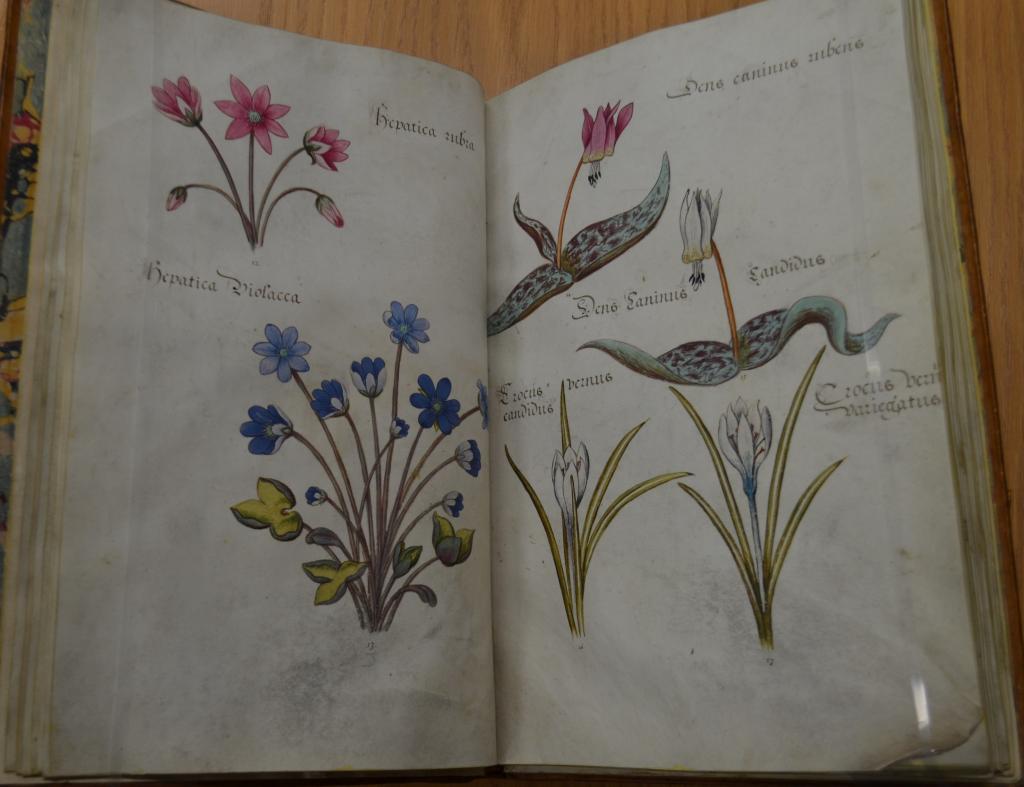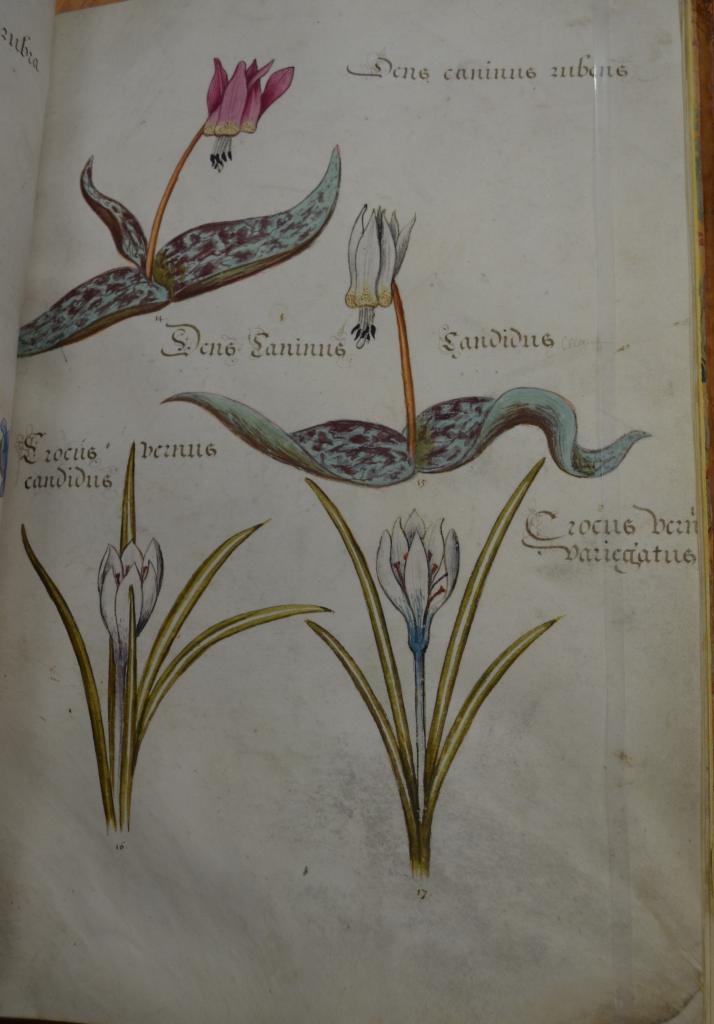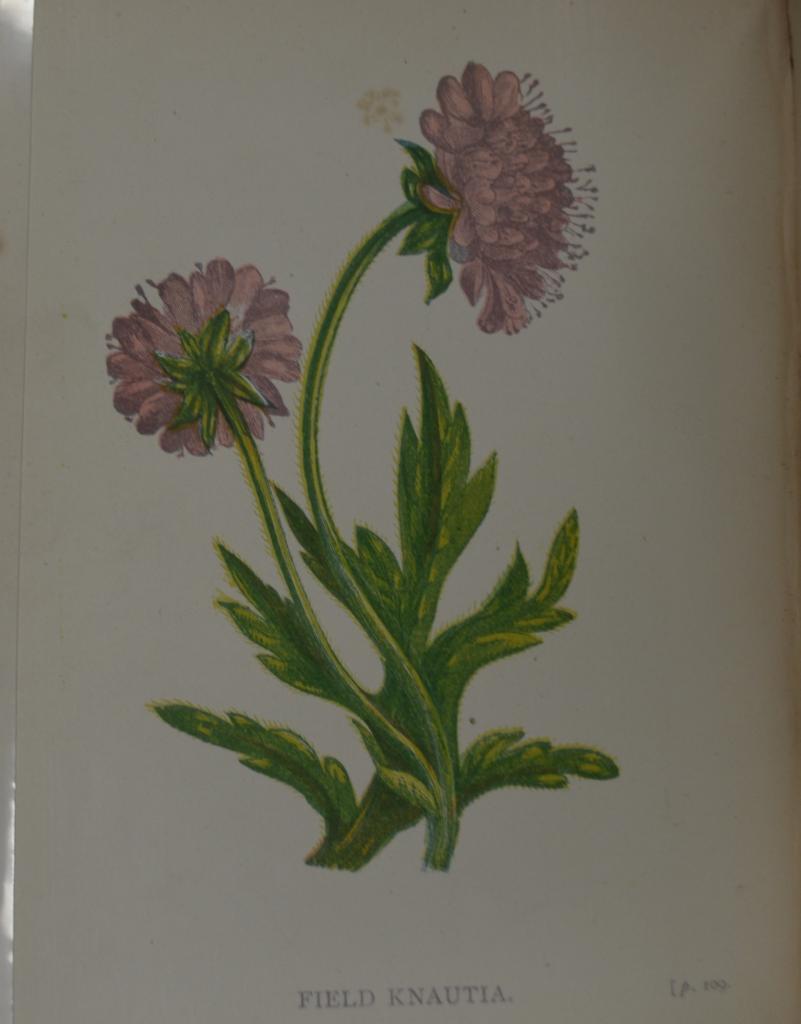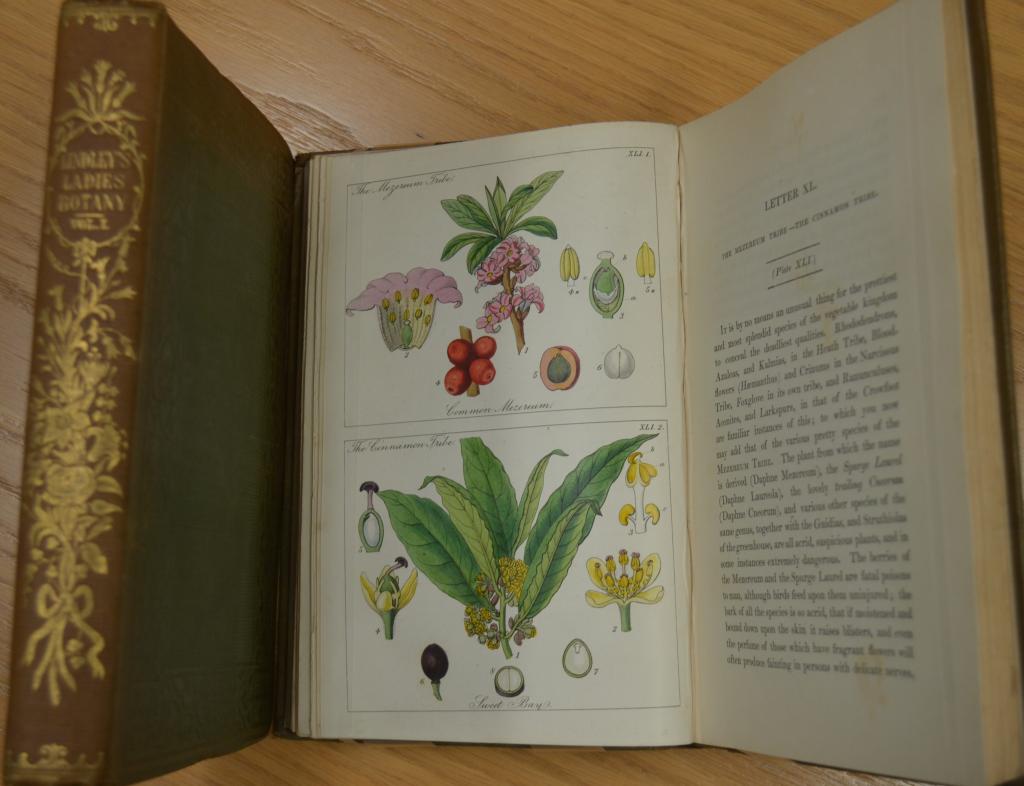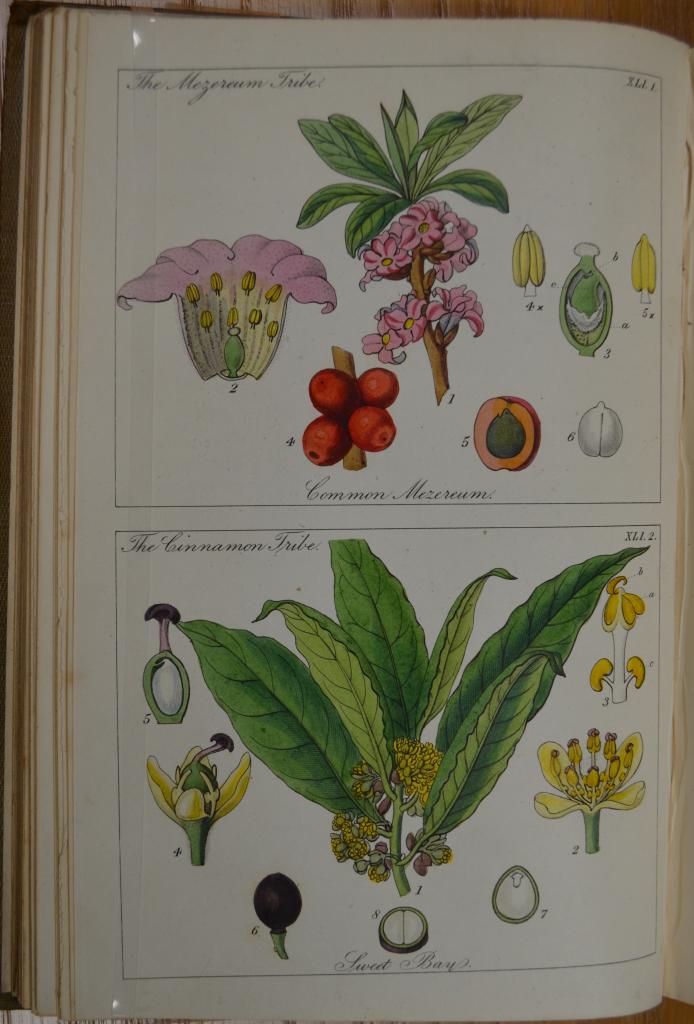Anne Pratt and Margaret Weld, Botanical Illustrators
Historically, botany and botanical illustration has been considered a gentile and appropriate pastime for ladies. However, women have always been healers, have taken note of plant characteristics and growth habits, their medicinal traits, and preparation techniques to achieve their curative values. Publishing houses would often hire women to illustrate and hand-color the images as they were more apt to pay attention to detail than men. Unfortunately they were rarely given credit for their work, however, women are increasingly given credit where credit is due, both retrospectively and currently.
Very little is known about Margaret Weld (~1681–1737). She was the daughter of Sir James Simeon, the Baronet of Chilworth. In 1701 she married Humphrey Weld of Lulworth Castle in Dorset. She had four children, Edward, Thomas, Mary and Elizabeth. In addition to this volume, her artistic talents were preserved in an engraving of Lulworth Castle, held by National Archives of the United Kingdom. The item on exhibit, Painted Flowers, is her original piece. The exquisite watercolors on vellum were collected by her family and bound into the book in 1722. It contains a bookplate of Thomas Weld, Esqr., Lulworth Castle, either Margaret Weld’s grandson or great-grandson, both of whom were named Thomas and resided at Lulworth Castle.
Weld, Margaret. 1522. Painted Flowers.
Anne Pratt (1806–1893) was sickly as a child and her older sister would bring her plants and flowers to draw and paint using watercolors. A friend and physician introduced her to botanical studies and Anne incorporated the scientific into her artwork. She published her first work, Flowers and Their Associations, at age 22. Her second book gained even greater praise for the illustrations’ accuracy and details. Her work Wild Flowers (on exhibit) even caught the attentions and accolades of Queen Victoria. Ms. Pratt wrote and illustrated the five-volume set The Flowering Plants, Grasses, Sedges, and Ferns of Great Britain: And Their Allies, the Club Mosses, Pepperworts and Horsetails (1855–56) and many others. General readers and botanists alike appreciated her works for the precision and life-like imagery and her writing’s ‘ability to blend botany with the romance of nature and thus fulfill two marketing niches – the demand for nature writing and flowers and the need for botanical knowledge for ladies.” (p. 158, Kramer) Ms. Pratt continued to publish after her marriage at age sixty, passing at 88. The Murray & Hong Special Collections has seven of her works.
Pratt, Anne. Wild Flowers. Society for promoting Christian knowledge, 1893.
Male botanists would often write instruction manuals for their women illustrators. Noted botanist and horticulturalist John Lindley (1799-1865), who worked for Sir Joseph Banks, was one such man. He wrote Ladies Botany stylized as instruction to realistically illustrating plants. Contrary to the Linnaean system of nomenclature, he supported the 'natural' system of Jussieu, and thus described plant anatomy, taxonomy and nomenclature for the non-botanist.
Lindley, John. 2023. Ladies’ Botany; or, A Familiar Introduction to the Study of the Natural System of Botany. Fifth edition.


